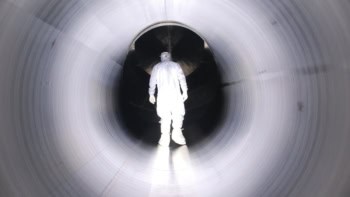The forest fires that raged through Greece between June and September killed at least 64 people, scorched 679,000 acres of land and, according to Greek finance officials, caused an estimated $1.6bn in damage. The best way to prevent such calamities is to spot fires as soon as possible so that they can be extinguished before they spread uncontrollably. Now, Vladimir Peskov of CERN and Antonino Zichichi of the Enrico Fermi Centre in Rome, Italy have modified a high-energy-physics detector to directly identify flames, and claim that it is more than a thousand times more sensitive than the best commercial detectors (arXiv:0709.2819v1).

Satellites can normally see fires covering areas of 30 acres or more, and smaller fires can often be spotted using smoke scanners, which look for light scattered by smoke particles in infrared beams. But on windy days when smoke is dispersed, or when fires are in their nascent stage, the only reliable methods are detectors that search for flames directly. To avoid fires being confused with sunlight these detectors must be sensitive to UV light with wavelengths shorter than 185 nm, which are absorbed in the ozone layer but are emitted by all flames.
Peskov and Zichichi’s device has its origins at CERN’s lepton asymmetry analyzer (LAA) project, which between 1988 and 1992 developed detectors for future high-energy hadron experiments such as ALICE at the Large Hadron Collider, due to start up next May. About the same length as a fountain pen and three times as wide, their device is a tube filled with the photosensitive vapour TMAE (trimethylaminoethyl) with a cathode at one end and a high-voltage anode wire running through the centre. When a UV photon coming from a flame strikes the cathode, it produces an electron that is subsequently accelerated towards the anode. On its way, the electron knocks other electrons off atoms in the vapour, and these electrons in turn ionize more atoms, ultimately causing an electron “avalanche”. This avalanche creates a pulse of current in the anode to be recorded by external electronics as a fire signal.
The highest European Union standard of UV detector is “class 1”, which requires a detector to be able to identify a 30 cm3 flame at a distance of 25 m. Peskov and Zichichi claim that their detector can detect the flame from a cigarette lighter at 30 m, and — based on the number of pulses every 10 seconds — is a thousand times more sensitive than commercially available UV fire detectors. In addition, its response time is just a few microseconds, making it suitable to detect, for example, sparks on oil-drilling platforms or lightning. The researchers say that the detectors would cost no more than €100 each, similar to the price of other commercial detectors, and could feasibly be mass produced and employed in tower networks to monitor forested regions.
Peskov and Zichichi have already demonstrated their device to fire-detector manufacturers Finsecur in Houilles, France and Maier in Milano, Italy. Christophe Bonazzi, the director of Finsecur, told physicsworld.com that he is not prepared to fund the development of the project at this time, but would be interested in implementing Peskov and Zichichi’s detector when they have refined it further.



